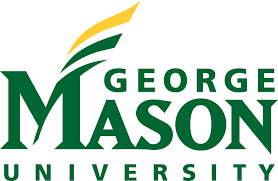George Mason University: Mason’s run to the 2006 Final Four paved the way for future Cinderellas
The 2006 Final Four run by the George Mason University men’s basketball was an improbable feat of such epic proportions within the college basketball realm that it has since been likened to Roger Bannister’s first sub-4-minute mile.
And like the late English runner who became the first to cover that distance in less than four minutes when he did so in 1954, the Patriots’ stunning run to the college basketball pinnacle 16 years ago remains the gold standard for everybody following behind that anything is always possible if you believe.
Mason’s unlikely NCAA Tournament run as an 11th seed through college basketball bluebloods Michigan State, North Carolina, Wichita State and Connecticut en route to the Final Four not only stands out as one of the defining moments in the university’s first 50 years, but it set the stage for later college basketball Cinderella stories in the likes of Butler, VCU and Loyola-Chicago.
Mason, however, will always stand out as the first belle to the ball. They captured America’s hearts along the way.
crowd of people in bookstore
“Barry Collier, the athletics director at Butler, later called me and said ‘Now you’ve broken the four-minute mile,’” recalled Jim Larranaga, the then-Patriots coach now at the University of Miami. “Now that you’ve done it, other programs will think they can do it.”
History has since proven Collier correct as Butler (2010, 2011), VCU (2011) and Loyola-Chicago (2018) each later defied the long odds against them and reached the Final Four.
And they have Mason to thank for it.
“Anybody who came after [Mason in 2006] went into the locker room believing it was possible,” said Hurricanes assistant coach Chris Caputo, who also served on Larranaga’s staff at Mason during the Final Four season. “We were part of something that had never been done before in modern college basketball history. We were kind of like the Roger Bannister.”
Playing at the time in the relatively unheralded Colonial Athletic Association, the Patriots became the CAA’s first-ever representative in the Final Four, with each upset more improbable than the previous one.
They began tournament play with a 75-65 win over a Michigan State team that had returned four starters from the previous year’s squad that had reached the Final Four. The sixth-seeded Spartans had outlasted Mason by six points in an early regular season meeting a year earlier.
“I asked the team, ‘Are we six points better than we were last year?” Larranaga said. “They said, ‘No, we’re a lot better than we were last year.’ So going into the Michigan State game, we were very, very confident and comfortable playing against them. We played a great game and won by 10.”
crowd of students posing
The mighty Tar Heels, the No. 3 seed and the reigning NCAA champions, were next, falling 65-60 in the Patriots’ second and final game in Dayton, Ohio. From there, it was back to the more familiar confines of Washington, D.C.’s nearby Verizon Center and a strongly partisan Mason crowd for the Sweet 16 matchup against fellow mid-major and No. 7 seed Wichita State. Four Patriots scored in double figures as Mason won, 63-55, to advance to the Elite Eight and face tournament overall No. 1 seed Connecticut.
The talent- and size-laden Huskies boasted four players who would later be selected in the first round of the NBA draft in just a few months and five players among the league’s top 40 selections. As if that weren’t enough, they were coached by Hall of Famer Jim Calhoun.
A huge turnout by the passionate Mason faithful reaped big dividends as the Patriots played the role of David to UConn’s Goliath. Down by as many as 12 points in the first half and nine in the second, the Patriots rallied to shock the entire sports world with an 86-84 overtime win that ranks as among the biggest upsets in NCAA Tournament history, propelling the team to Indianapolis for the Final Four.
More than 10,000 frenzied Patriots fans were on hand at what was then the Patriot Center when the team returned home following its win over UConn.
“The place was filled,” Caputo said. “It was crazy.”
Largely unknown to the rest of the nation prior to that NCAA Tournament, Mason had suddenly become en vogue everywhere. Following the Final Four appearance, Robert Baker, then director of the Center for Sport Management at Mason and now interim dean of Mason’s College of Education and Human Development, examined the economic and social impacts of the Final Four appearance across the university. What he found is good news for the next university that wears the glass slipper. Mason’s improbable run was responsible for an estimated $677 million in free publicity from television, print and radio media.
As a result, the university reported an 800% increase in traffic to its official website, while the university bookstore in the Johnson Center, which typically averaged $11,000 in weekly sales, brought in just shy of $1 million in the 10 days leading up to the Final Four. Admissions inquiries increased by 350% with out-of-state applications increasing by 40%.
“The run to the Final Four really brought national attention, not just local and regional,” Larranaga said. “With that kind of recognition and publicity, George Mason was really on the map from then on.”

